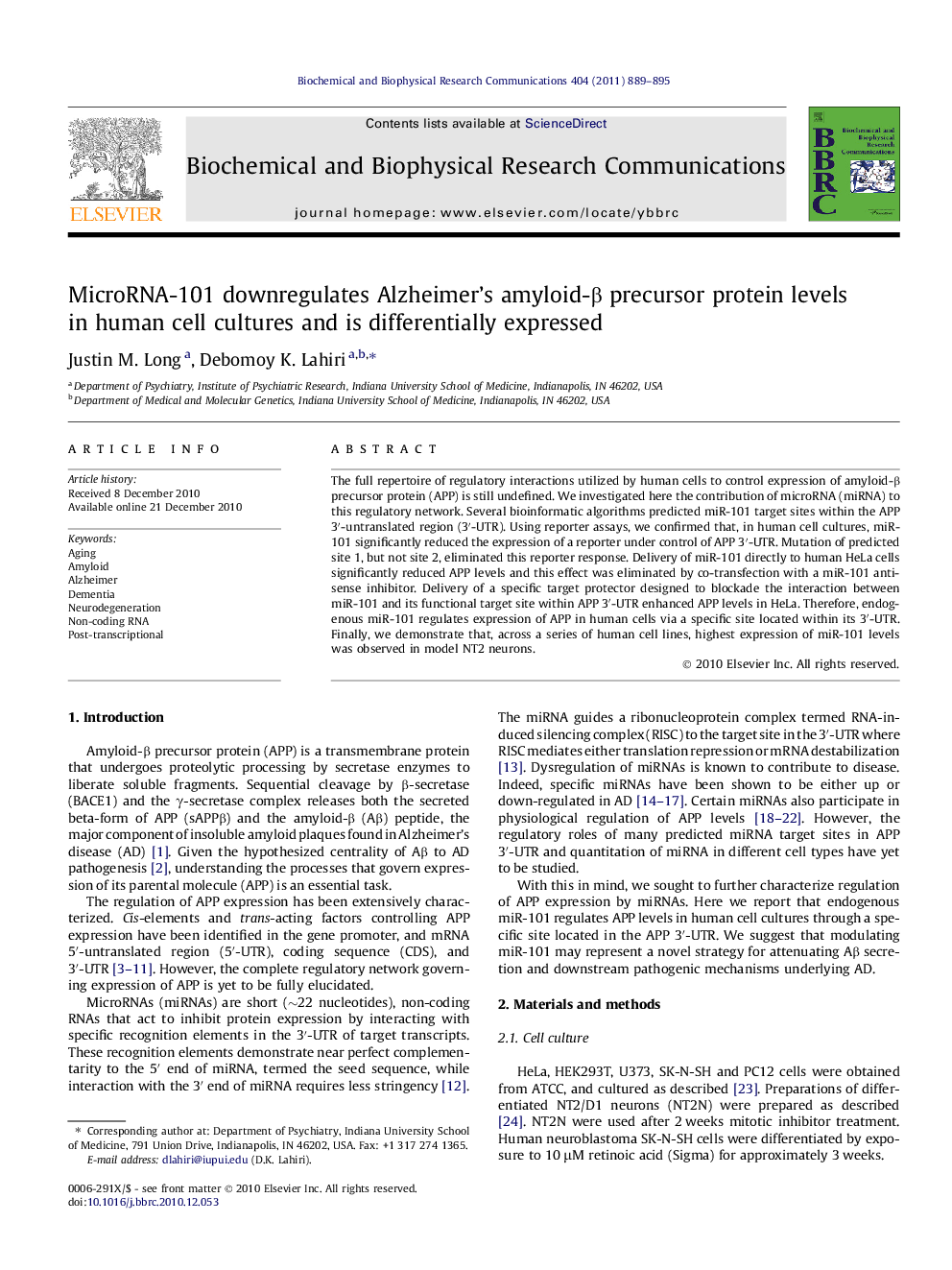| Article ID | Journal | Published Year | Pages | File Type |
|---|---|---|---|---|
| 1931253 | Biochemical and Biophysical Research Communications | 2011 | 7 Pages |
The full repertoire of regulatory interactions utilized by human cells to control expression of amyloid-β precursor protein (APP) is still undefined. We investigated here the contribution of microRNA (miRNA) to this regulatory network. Several bioinformatic algorithms predicted miR-101 target sites within the APP 3′-untranslated region (3′-UTR). Using reporter assays, we confirmed that, in human cell cultures, miR-101 significantly reduced the expression of a reporter under control of APP 3′-UTR. Mutation of predicted site 1, but not site 2, eliminated this reporter response. Delivery of miR-101 directly to human HeLa cells significantly reduced APP levels and this effect was eliminated by co-transfection with a miR-101 antisense inhibitor. Delivery of a specific target protector designed to blockade the interaction between miR-101 and its functional target site within APP 3′-UTR enhanced APP levels in HeLa. Therefore, endogenous miR-101 regulates expression of APP in human cells via a specific site located within its 3′-UTR. Finally, we demonstrate that, across a series of human cell lines, highest expression of miR-101 levels was observed in model NT2 neurons.
Research highlights► MiR-101 inhibits expression of reporter under control of APP 3′-UTR in human cells. ► MiR-101 mediates this effect through one of two predicted target sites. ► MiR-101 reduces expression of endogenous APP in human cultured cells. ► APP expression is regulated by endogenous miR-101 in human cells.
